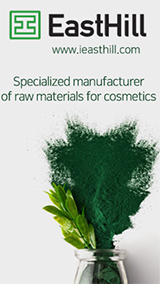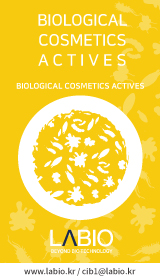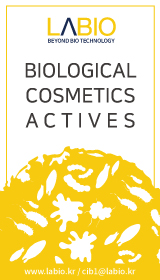2023 Global Cosmetic Focus Plan Ⅰ-USA and France
Consumers in the United States, which boasts the world's largest single cosmetics market, and France, a recognized leader in the cosmetics industry, recognize the differentiation points of K-beauty, but give poor evaluations of the brand's popularity.
At the same time, American consumers pointed out inconveniences during use, and French consumers responded by expressing both favorable reviews and dissatisfaction with the ingredients and raw materials.
This is what the Korea Cosmetic Industry Research Institute (President Lee Jae-ran, www.kcii.re.kr , hereinafter referred to as the Research Institute) confirmed through this year's first planned publication of Global Cosmetic Focus.
Success in differentiation... Low score in brand popularity
According to a survey conducted on cosmetics consumers in two countries, the United States and France, it can be analyzed that Korean cosmetics have succeeded in differentiating themselves.
In the United States, the popularity evaluation score for K-beauty brands (5.4 points) was lower than the United States (5.7 points), but in the differentiation category, it recorded 5.6 points, which was higher than the United States (5.4 points).
Representative brands that recognize differentiation include △ COSRX and △ Laneige, and Innisfree and ETUDE were also mentioned. What is unique is that all four brands are operated by or have a relationship with AmoreSurpic.
In France, in the brand popularity evaluation, Korea (5.5 points) was lower than Japan (5.7 points), Italy (5.6 points), France (5.6 points), and the UK (5.6 points). On the other hand, it received the highest score (5.5 points) for differentiation.
The most mentioned brand was Beauty of Joseon. △ Erborian △ ETUDE △ Laneige followed.
Ingredients and raw materials are both satisfying and dissatisfying factors.
Both American and French consumers were highly satisfied with the ingredients and raw materials. Regarding dissatisfaction factors, American consumers pointed out inconvenience in use, while French consumers pointed out ingredients and raw materials as satisfaction factors.
The researcher said, “Consumers in these two countries can be interpreted as highly valuing Korean cosmetics that emphasize specific ingredients, raw materials, and corresponding functions beyond a simple brand image,” adding, “On the other hand, it is inconvenient for American consumers to use them.” “As it is pointed out as a factor of dissatisfaction, it suggests that improvements are needed in containers and packaging, etc.”
In particular, French consumers pointed out factors of dissatisfaction with ingredients and raw materials. It can be analyzed that this is because French consumers, who are interested in ingredients and raw materials, accept and expect the unique and differentiated ingredients and raw materials of Korean cosmetics to be fresh, while at the same time, they are relatively less confident in purchasing unfamiliar cosmetic ingredients and raw materials. .
“As expected of K-pop”… Music video shows great influence
In both the United States and France, the content that was most influenced by consumers who experienced Korean cosmetics was Korean music videos. French consumers are influenced by relatively more diverse Korean-related content.
In other words, in the United States, 16.5% of consumers said they were influenced by Korean music videos. Among them, 40.0% of loyal consumers and 27.6% of experienced consumers responded that they were influenced by Korean music videos.
France also had the greatest influence of Korean music videos, accounting for 15.9% of respondents. Korean entertainment programs followed at 10.4%, followed by YouTube and Korean dramas at 9.5%.
However, in the loyal consumer group, the proportion of respondents who responded that it was Korean music video, Korean YouTube content, and Korean movie was the same at 33.3%, and in the experienced consumer group, 63.6% responded that it had 'no effect', showing that the ratio of respondents was more loyal than in the US consumer survey. , it was found that the influence of Korean music videos on experienced consumers was low.
In the survey, loyal consumers are defined as 'consumers who use Korean cosmetics and have favorite Korean brands', and experienced consumers are 'consumers who have experience using Korean cosmetics and know a few Korean brands.'
A researcher official said, “Given the difference in survey results, comparing consumers in the two countries who have experience using K-beauty or who frequently purchase it, it appears that French consumers are influenced by more diverse Korean content than American consumers.” “Experts have also sent opinions that not only Korean media content, but also various SNS information, food, and travel, as well as interest in Korea and Korean culture in general, influence consumption,” he added.
Satisfaction with skin care efficacy is high, but stickiness, residual feeling, and oiliness are factors for improvement.
As a result of analyzing the reviews of consumers in two countries who used Korean cosmetics (skin care), 89.4% in the United States and 90.2% in France expressed satisfaction. In particular, efficacy-related satisfaction keywords were the highest at 73.0% in the US and 69.4% in France, and among improvement keywords, keywords related to feeling of use were the highest at 76.8% (USA) and 73.5% (France).
Regarding this, the researcher said, “American consumers evaluated the feeling of use as ‘thick and sticky,’ ‘heavy,’ and ‘greasy.’ French consumers gave evaluations such as 'stickiness,' 'residue,' and 'bit oily,'" he said. "In both countries, there are negative opinions about the residue left on the skin after use. “This is a point that cosmetics companies seeking to enter this market should take note of in the future,” he advised.
The researcher said, “For a more in-depth market analysis, we collected market information from various angles by using various research tools such as big data analysis, in-depth consumer surveys, and interviews with domestic and foreign experts, while collecting both positive and negative evaluations.” We plan to publish two special editions this year to in-depth analyze how beauty is currently evaluated by overseas consumers and where it stands. “We will publish in-depth analysis data on the Chinese and Japanese markets at the end of the year,” he said.







